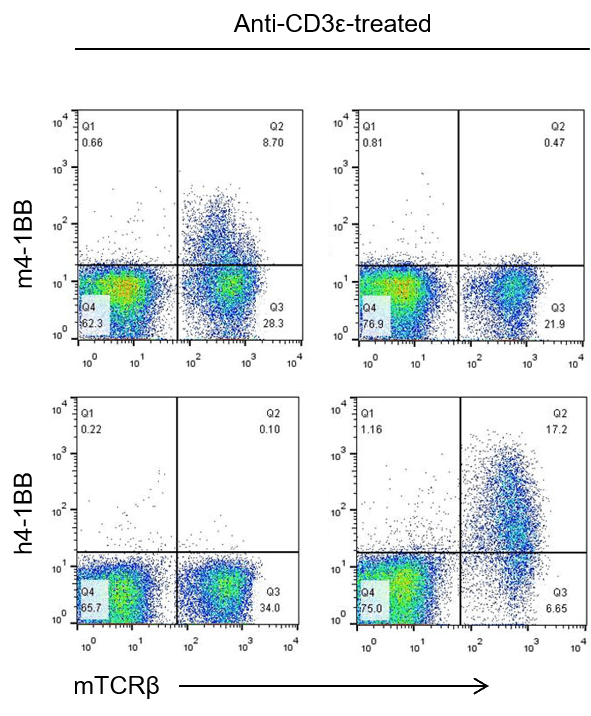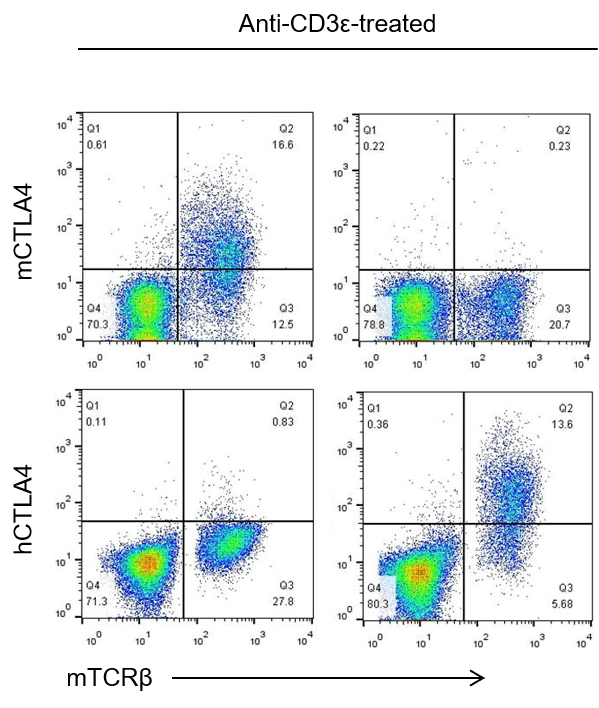Basic Information
-
Targeting Strategy

-
Gene targeting strategy for B-hCTLA4/h4-1BB mice.
The exon 2 of mouse Ctla4 gene that encode the IgV domain were replaced by human CTLA4 exon 2 in B-hCTLA4/h4-1BB mice. The exons 2-7 of mouse 4-1BB gene that encode the extracellular domain were replaced by human 4-1BB exons 2-7 in B-hCTLA4/h4-1BB mice.
-
Details

-
Phenotype
Protein Expression Analysis

Strain specific 4-1BB expression analysis in homozygous B-hCTLA4/h4-1BB mice by flow cytometry. Splenocytes were collected from WT and homozygous B-hCTLA4/h4-1BB (H/H) mice stimulated with anti-CD3ε in vivo, and analyzed by flow cytometry with species-specific anti-h4-1BB antibody. Mouse 4-1BB was detectable in WT mice but not homozygous B-hCTLA4/h4-1BB mice. Human 4-1BB was exclusively detectable in homozygous B-hCTLA4/h4-1BB mice but not WT mice.

Strain specific CTLA4 expression analysis in homozygous B-hCTLA4/h4-1BB mice by flow cytometry. Splenocytes were collected from WT and homozygous B-hCTLA4/h4-1BB (H/H) mice stimulated with anti-CD3ε in vivo, and analyzed by flow cytometry with species-specific anti-hCTLA4 antibody. Mouse CTLA4 was detectable in WT mice but not homozygous B-hCTLA4/h4-1BB mice. Human CTLA4 was exclusively detectable in homozygous B-hCTLA4/h4-1BB mice but not WT mice.
-
References

-
- J Immunol.1991 Aug 1;147(3):1037-44.
- J Exp Med.1991 Sep 1;174(3):561-9.
- PLoS One. 2014 Jan 21;9(1): e86337.
- Cancer Gene Ther. 2004 Mar;11(3):215-26.


